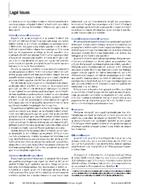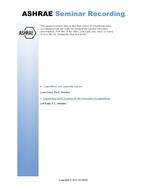When modeling an HVAC system using series fanpowered terminal units (FPTUs) with permanent split capacitor motors in EnergyPlus, the user must enter values for fan total pressure riseandfan/motor efficiency.Commonlyrecommended fan total pressure values for use in EnergyPlus simulations are much higher than those measured for an 8 inch inlet (203 mm) series fan-powered terminal unit (Bryant and Bryant 2015). Values cited in that study were on the order of 0.25 in. w.g. (63 Pa) and not 1.5-3 in. w.g. (374-747 Pa) as found in the literature. This paper presents manufacturers’ performance data that verify and extend variable-air-volume (VAV) series fan-powered terminal unit total pressure rise measurements. For the two most common series fan-powered terminal unit inlet sizes, 8 and 12 in. (203 and 305 mm), the fan total pressure rise was found to be in the range of 0.20-0.35 in. w.g. (50-87 Pa). An EnergyPlus five-zone model was used to determine the impact of using “poor” versus “good” input values when modeling a VAV system with series FTPUs. Results show considerable impacts in yearly fan and heating energy. However, HVAC total system energy differences are quite small, less than 2% between recommended and “poor” inputs. The value for fan/motor efficiency for a series fanpowered terminal unit with a permanent split capacitor motor could essentially be eliminated as long as an appropriately low value of fan total pressure rise is selected for the simulation inputs.
Citation: ASHRAE Transactions, vol. 123, pt. 2
Product Details
- Published:
- 2017
- Number of Pages:
- 7
- Units of Measure:
- Dual
- File Size:
- 1 file , 2.1 MB
- Product Code(s):
- D-LB-17-016


